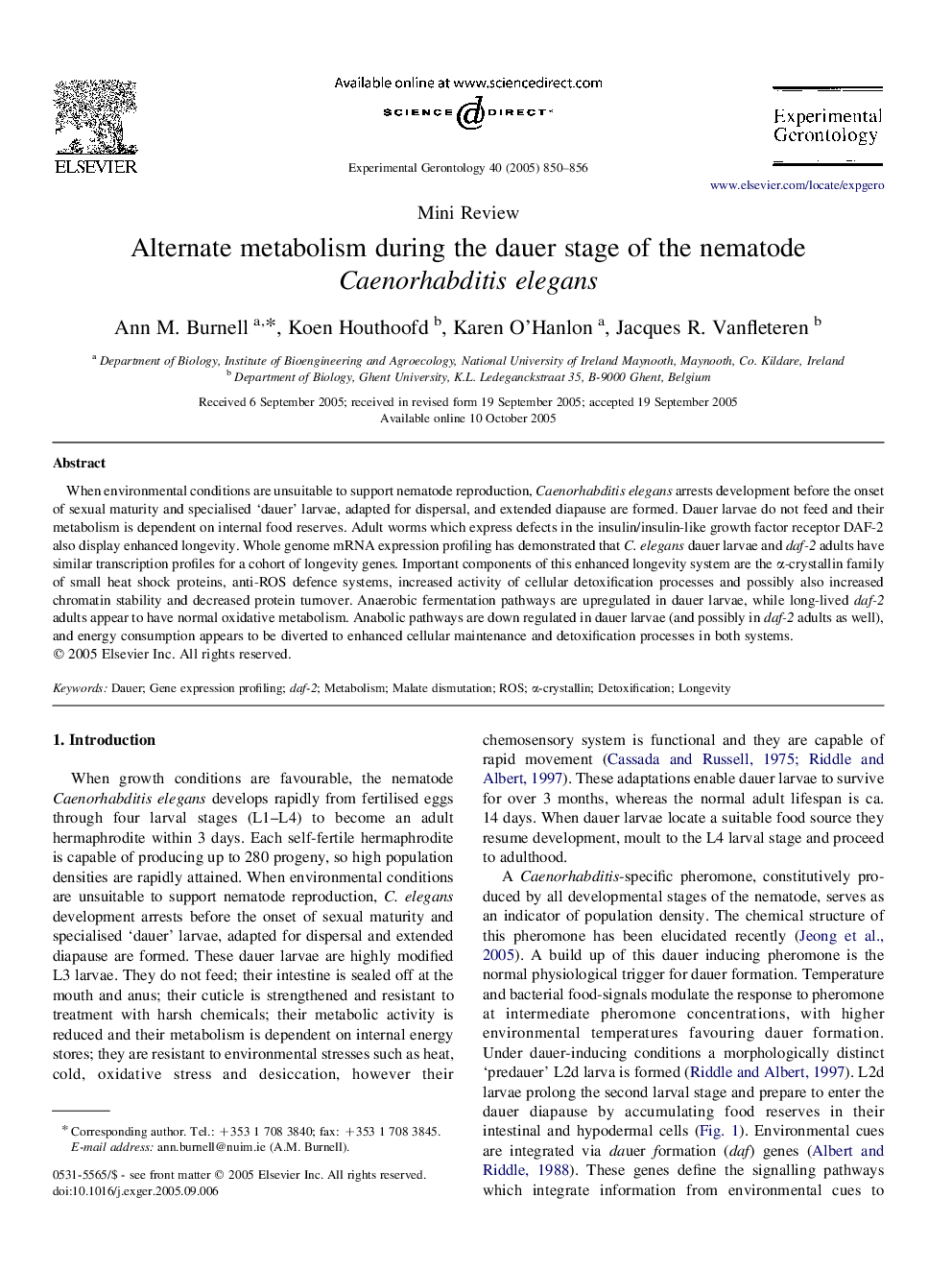| Article ID | Journal | Published Year | Pages | File Type |
|---|---|---|---|---|
| 10737163 | Experimental Gerontology | 2005 | 7 Pages |
Abstract
When environmental conditions are unsuitable to support nematode reproduction, Caenorhabditis elegans arrests development before the onset of sexual maturity and specialised 'dauer' larvae, adapted for dispersal, and extended diapause are formed. Dauer larvae do not feed and their metabolism is dependent on internal food reserves. Adult worms which express defects in the insulin/insulin-like growth factor receptor DAF-2 also display enhanced longevity. Whole genome mRNA expression profiling has demonstrated that C. elegans dauer larvae and daf-2 adults have similar transcription profiles for a cohort of longevity genes. Important components of this enhanced longevity system are the α-crystallin family of small heat shock proteins, anti-ROS defence systems, increased activity of cellular detoxification processes and possibly also increased chromatin stability and decreased protein turnover. Anaerobic fermentation pathways are upregulated in dauer larvae, while long-lived daf-2 adults appear to have normal oxidative metabolism. Anabolic pathways are down regulated in dauer larvae (and possibly in daf-2 adults as well), and energy consumption appears to be diverted to enhanced cellular maintenance and detoxification processes in both systems.
Related Topics
Life Sciences
Biochemistry, Genetics and Molecular Biology
Ageing
Authors
Ann M. Burnell, Koen Houthoofd, Karen O'Hanlon, Jacques R. Vanfleteren,
